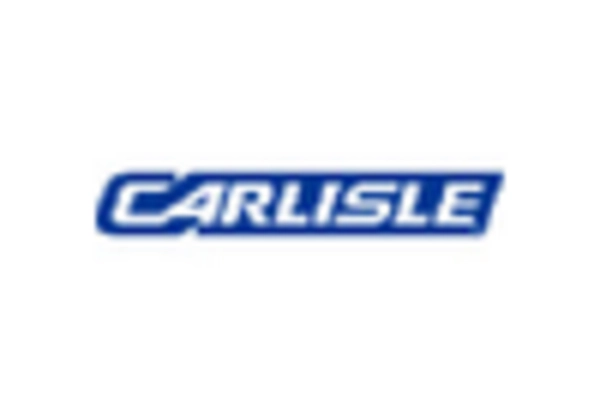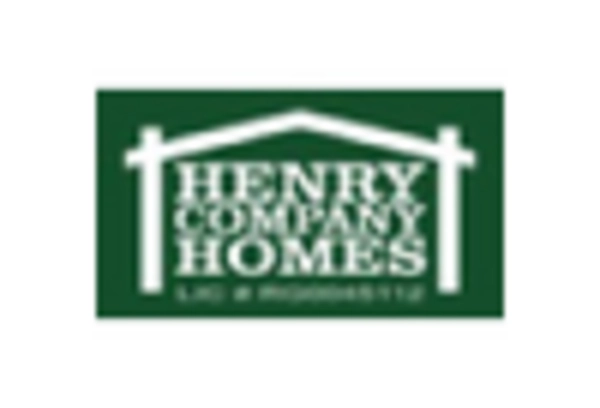Increased Construction Activities
The Self-Adhered Roofing Membrane Market is benefiting from a surge in construction activities across various sectors, including residential, commercial, and industrial. As urbanization accelerates, the demand for new buildings and infrastructure projects is on the rise. This growth is reflected in construction spending, which has shown a steady increase, with estimates suggesting a growth rate of around 5% annually. Self-adhered roofing membranes are favored for their ease of installation and durability, making them an attractive option for contractors. Consequently, the expansion of the construction sector is likely to bolster the demand for self-adhered roofing solutions.
Growing Awareness of Climate Change
The Self-Adhered Roofing Membrane Market is increasingly influenced by the growing awareness of climate change and its impacts. As stakeholders become more conscious of their environmental footprint, there is a shift towards sustainable building materials, including self-adhered roofing membranes. These products are often designed to reflect solar energy, thereby reducing heat absorption and contributing to lower urban temperatures. Market Research Future indicates that the demand for eco-friendly roofing solutions is expected to rise by approximately 7% annually as consumers prioritize sustainability. This heightened awareness is likely to drive innovation and investment in self-adhered roofing technologies.
Rising Demand for Energy Efficiency
The Self-Adhered Roofing Membrane Market is experiencing a notable increase in demand for energy-efficient roofing solutions. As energy costs continue to rise, consumers and businesses are increasingly seeking roofing materials that enhance insulation and reduce energy consumption. Self-adhered membranes, known for their superior thermal performance, are becoming a preferred choice. According to recent data, the energy-efficient roofing segment is projected to grow at a compound annual growth rate of approximately 6% over the next five years. This trend is driven by both regulatory pressures and consumer preferences for sustainable building practices, indicating a robust market potential for self-adhered roofing membranes.
Regulatory Support for Sustainable Practices
The Self-Adhered Roofing Membrane Market is positively influenced by increasing regulatory support for sustainable building practices. Governments are implementing stricter building codes and standards that promote the use of environmentally friendly materials. This regulatory environment encourages the adoption of self-adhered roofing membranes, which often feature recyclable materials and lower environmental impact. Recent legislation in various regions has mandated the use of energy-efficient roofing systems, further driving market growth. As a result, manufacturers are likely to innovate and expand their product lines to comply with these regulations, enhancing the overall market landscape.
Technological Advancements in Roofing Solutions
The Self-Adhered Roofing Membrane Market is witnessing significant technological advancements that enhance the performance and application of roofing membranes. Innovations in adhesive technologies and material formulations are leading to improved durability, weather resistance, and ease of installation. For instance, the introduction of self-healing membranes and advanced polymer blends is revolutionizing the market. These advancements not only improve the lifespan of roofing systems but also reduce maintenance costs for end-users. As technology continues to evolve, it is expected that the self-adhered roofing membrane segment will capture a larger share of the roofing market, driven by enhanced product offerings.

















Leave a Comment